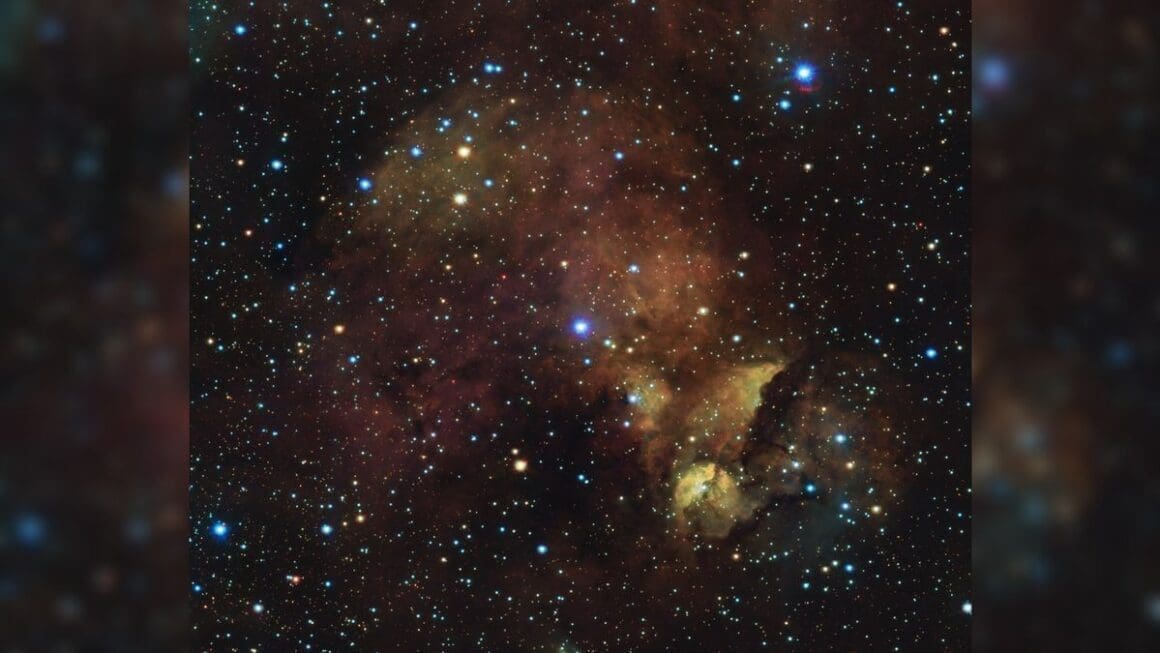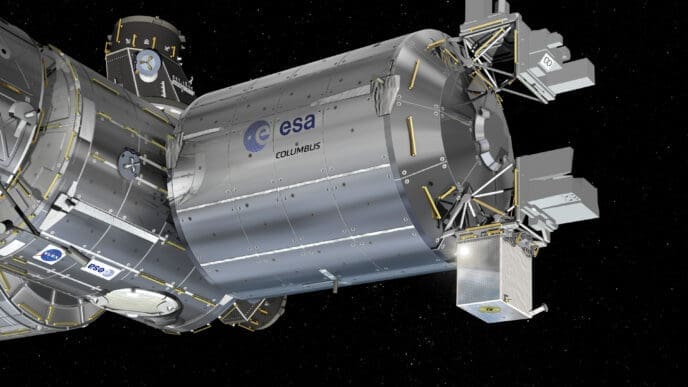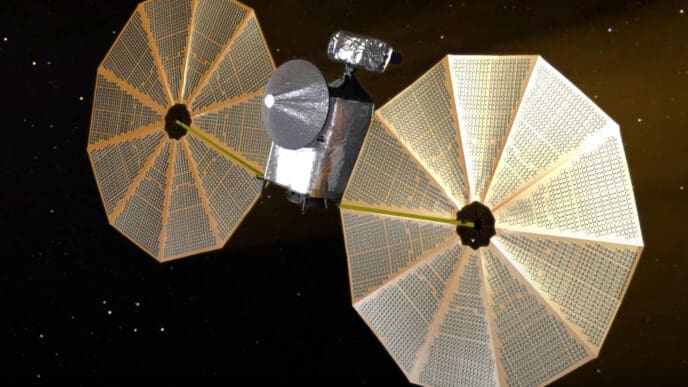A striking image captured by the Very Large Telescope at the Paranal Observatory in Chile unveils a distant cosmic phenomenon known as the Running Chicken Nebula. This celestial feature, formally identified as IC 2872 or Gum 40, is an emission nebula located approximately 6,500 light-years away in the southern Centaurus constellation.
The image, released by the European Southern Observatory (ESO), depicts a vibrant emission nebula. Emission nebulas are clouds of ionized gas that emit light of various colors due to the radiation from nearby stars. The Running Chicken Nebula features a distinctive shape that some observers liken to a chicken with its head raised in astonishment at the universe. Notably, a bright region within the nebula resembles a glowing beak, contributing to its playful moniker.
This nebula was initially cataloged in 1888 by the Danish astronomer John Louis Emil Dreyer, contributing to the New General Catalogue of Nebulae and Clusters of Stars, which chronicled 7,840 astronomical objects. Dreyer’s work later expanded with additional Index Catalogues that listed thousands more celestial features. The nebula’s secondary designation, Gum 40, derives from the Australian astronomer Colin Stanley Gum’s 1955 catalog of southern emission nebulas.
According to the ESO, the formation of emission nebulas such as IC 2872 occurs when the intense radiation from stars energizes surrounding gases, causing them to radiate in a spectrum of colors. These nebulas are often sites of new star formation due to the presence of dense gas and dust. Several young, luminous blue stars can be observed within the Running Chicken Nebula in the recently shared image, including one suggesting the eye of the cosmic fowl.
Technological advancements in telescopes and imaging have allowed astronomers to identify even more deep-space objects, and the catalogs of these celestial phenomena will continue to grow. The ESO emphasized this point in their statement, highlighting the ongoing development and discovery within the field of astronomy.
The new image of the Running Chicken Nebula captured by the Very Large Telescope offers a compelling glimpse into the complex and dynamic phenomena of our universe. It underscores the ongoing exploration and discovery made possible through advancements in astronomical technology.
Source: Space












